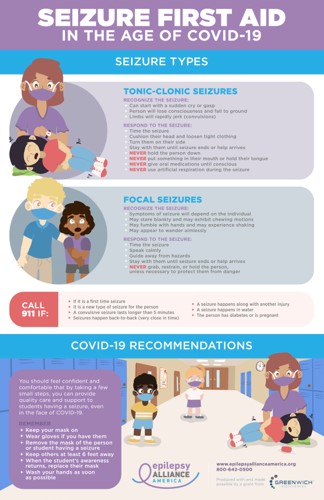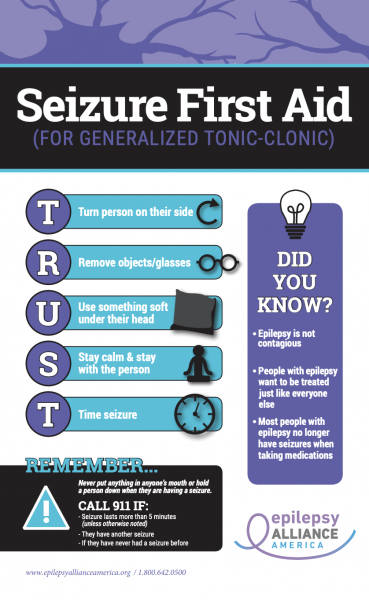About 1 in 10 people may have a seizure in their lifetime. That means seizures are common and one day you might need to help someone during or after a seizure.
What is a Seizure?
A seizure is a sudden surge of electrical activity in the brain. Seizures can alter awareness, physical movements, emotions, or actions and generally last a few seconds to a few minutes. Seizures can take on many different forms and affect people very differently.
There are many different types of seizures but they can be classified into two main categories: generalized and focal.
Generalized seizures mean that the entire brain is engaged in the seizure. The person may become unconscious or unresponsive. Generalized seizures may be convulsive or non-convulsive. Types include tonic-clonic, absence, myoclonic, and atonic seizures.
Focal seizures involve only certain parts of the brain. The person may remain aware, be confused, have automatic muscle movements, and/or experience changes in taste, sight, smell, or feelings. These seizures are classified by whether or not there is a change in awareness.
Learn about Infantile Spasms, a type of seizure, here
Learn what you you can do to help protect you and your loved ones during a seizure.
Acute Seizure Action Plan
70% of people with epilepsy DO NOT have a Seizure Action Plan. Make a plan.
Seizure First Aid Training
Through our member organizations, Epilepsy Alliance America offers a comprehensive network of Seizure First Aid & Training programs and resources for all audiences including programs that seek to educate and train school staff, nurses, teachers, support staff, students of all ages, first responders and community organizations how to recognize and respond to seizures.
Sign Up for Our Tools for Schools Email List


